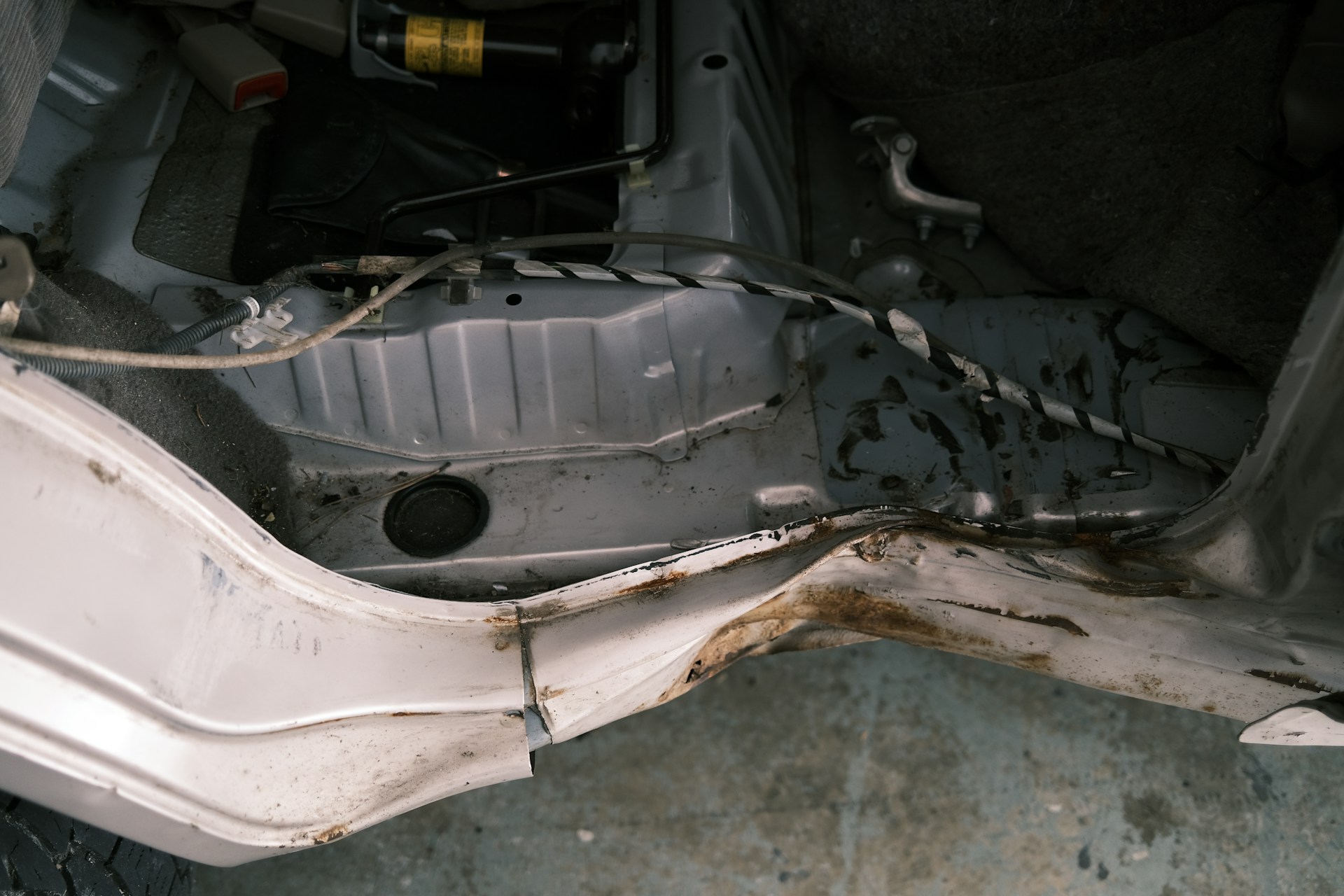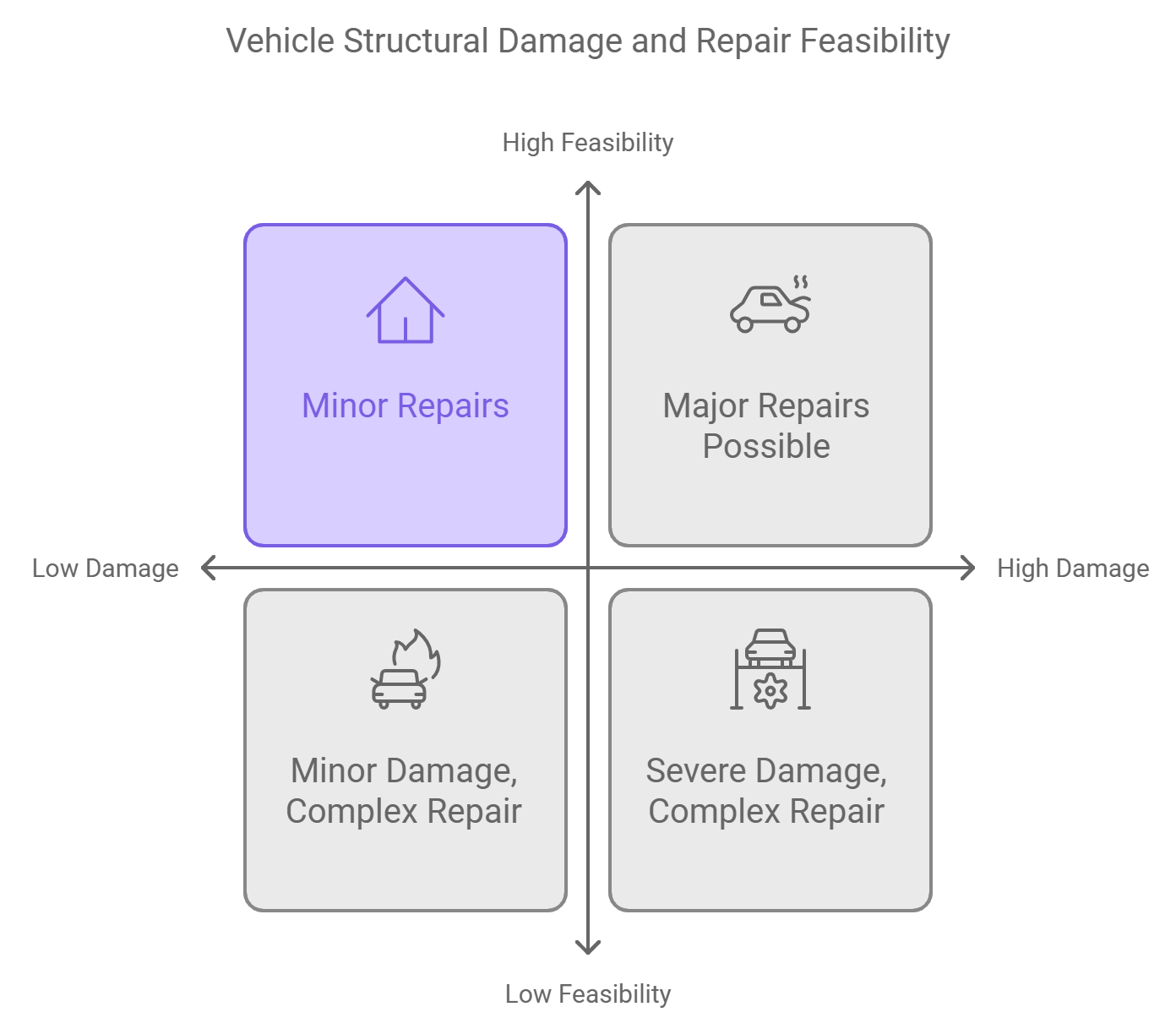Understanding what is structural damage to a car is crucial for any car owner concerned about vehicle safety and long-term reliability. Structural damage goes beyond simple dents or scratches, impacting the very integrity of the car's frame or foundational elements. While some wreckage can be more visually accessible, other forms have a way of being concealed, and it requires car owners to press on with caution and knowledge in mind. This is where body shops come into play, as they are more often than not the first ones that evaluate and diagnose these issues. Structural integrity is an important attribute to recognize that helps assure safety on the road, apart from the life span of the vehicle.
What Does Structural Damage to a Car Mean?
Structural damage meaning refers to harm impacting the main framework or load-bearing elements of a vehicle. Unlike surface-level dents after minor hail damage, this damage affects core parts like the chassis, frame rails, or pillars, which provide crucial support to the car's structure. Such wreckage typically results from a significant force, like a collision or severe impact. The extent of structural damage can vary widely; some vehicles may suffer minor frame distortions, while others could experience compromised alignment, affecting handling and safety. Proper assessment is essential to understand how deeply a vehicle’s structure is impacted and what repairs may be needed.
Common Forms of Structural Damage to a Car
| Common Forms | Description |
| Frame Damage | Frame damage affects the core structure of a car, often impacting its alignment and safety. This type of damage can compromise the integrity of the vehicle, requiring precise repair techniques to restore its original shape. |
| Crumple Zones | Crumple zones are designed to absorb impact energy during a collision, but damage here can weaken these safety areas, affecting the car’s overall protective capability in future accidents. |
| Structural Components | Structural components, including pillars, door sills, and rocker panels, support the vehicle’s overall stability. Damage to these parts can result in compromised safety and performance if not properly repaired. |
| Mechanical Damage | Mechanical damage often accompanies structural issues, affecting parts like the engine, transmission, or suspension. This type of damage can lead to further structural issues if left untreated. |
How Does Structural Damage Happen?

Structural damage most often occurs when a car enters into any serious impact or accident where the forces from that impact affect the basic structure of a vehicle. Newer autos are often unibody in construction, meaning that frame and body are integrated, and therefore unibody damage is increasingly common in heavy impacts. Oftentimes, a driver may notice changes in the feel of its handling or alignment after an accident just by driving it and find indications of structural issues. For anyone concerned about a car's history, a VIN decoder can help reveal past accidents or repairs, providing critical information on possible structural impacts that might not be visible.
The Difference Between Structural Damage and Cosmetic Damage
| Aspect | Structural Damage | Cosmetic Damage |
| Definition | Impacts the vehicle’s core framework or underlying structure. | Surface-level issues affecting the car’s appearance, such as scratches or dents. |
| Severity | Considered serious; severe structural damage can compromise safety and handling. | Generally minor; does not affect vehicle safety or performance. |
| Common Cause | Often results from a major car accident or collision. | Typically caused by minor incidents, such as parking lot bumps. |
| Repair Complexity | Requires specialized repairs and equipment to restore structural integrity. | Easier and less expensive to fix, focused on restoring appearance only. |
| Impact on Resale Value | Significantly lowers resale value due to compromised safety and structure. | Has a minimal impact on resale value if properly repaired. |
Identifying and Assessing Structural Damage
How Does Structural Damage Affect a Car’s Resale Value?
Structural damage, especially frame damage, significantly reduces a vehicle’s resale value due to buyer concerns and increased repair costs. An insurance company may label such cars as less desirable, impacting the purchasing process for prospective buyers. Additionally, diminished car value can lead to lower offers in the market, as buyers factor in the potential cost of future repairs and maintenance.
Methods and Challenges of Structural Repairs

Recognizing structural damage accurately is crucial in the repair process, as undetected hidden damage can severely affect a vehicle's safety. Addressing the question "Can structural damage be repaired?" depends largely on the severity of the impact and the vehicle's structural parts. Repairing such wreckage involves specialized equipment and trained technicians to restore frame alignment and stability. However, some cars may never fully regain their original integrity. Additionally, the percentage of vehicle damage can play a role in determining repair feasibility, influencing insurance decisions and overall repair costs based on the extent of structural compromise. Even after repairs, vehicles with prior severe damage may retain a lower market value.
Signs A Used Car Has Had Structural Damage Repaired
- Uneven Gaps: Check for inconsistent spacing between body panels, such as doors, hood, and trunk, as uneven gaps often indicate previous alignment issues due to structural repairs.
- Mismatched Paint: Variations in paint color or texture on the body can reveal areas where repairs were performed, especially if the fix involved panel replacements.
- Electrical Systems Malfunctions: Faulty electrical systems, such as misaligned headlights or taillights, can be a sign that the vehicle’s wiring was affected during a structural fix.
- Visible Weld Marks: Unusual weld marks in the engine bay or door frames may suggest that major structural parts were fixed or replaced.
How to Prevent Future Structural Damage

To reduce the risk of structural damage, regular maintenance and safe driving practices are essential. Addressing minor issues, like cosmetic damage, promptly can prevent them from escalating into larger problems. Minor dents, if left unrepaired, could weaken the frame over time, increasing potential repair costs. Additionally, comprehensive insurance coverage helps handle insurance claims efficiently, covering both cosmetic and structural repairs when needed.
Summary
Understanding structural damage to a car is essential for anyone considering buying or maintaining a vehicle. Structural damage impacts not only the car’s value but also its longevity, as even fixed cars may have hidden weaknesses. Key factors such as the extent of the initial damage, the quality of repairs, and the specific parts of the vehicle affected all play a role in determining future reliability. Buyers should always investigate vehicle history and repair records to identify potential structural issues, as these can influence both the car’s driving on the road and its resale appeal in the long term.
Frequently Asked Questions
Not necessarily. Whether structural damage results in a total loss depends on the extent of the wreckage and the cost of repairs relative to the vehicle's value. If repair costs exceed a certain percentage of the car's value — typically set by the insurance company — the car may be considered totaled.
Driving a car with unrepaired structural wreckage can be risky, as it compromises the vehicle's stability and safety features, especially in the event of another accident. However, if structural damage has been professionally assessed and fixed, it can often be safe to drive.
Repairing body damage before selling a car can increase its appeal and market value, as buyers often prefer cars with minimal visible damage. Minor body repairs can be worthwhile, but it’s essential to weigh repair costs against potential resale value.
Irreparable structural damage refers to serious harm to the vehicle’s core frame or components, making it unsafe to drive or uneconomical to repair. This can happen when the main parts, like the chassis or main frame.







